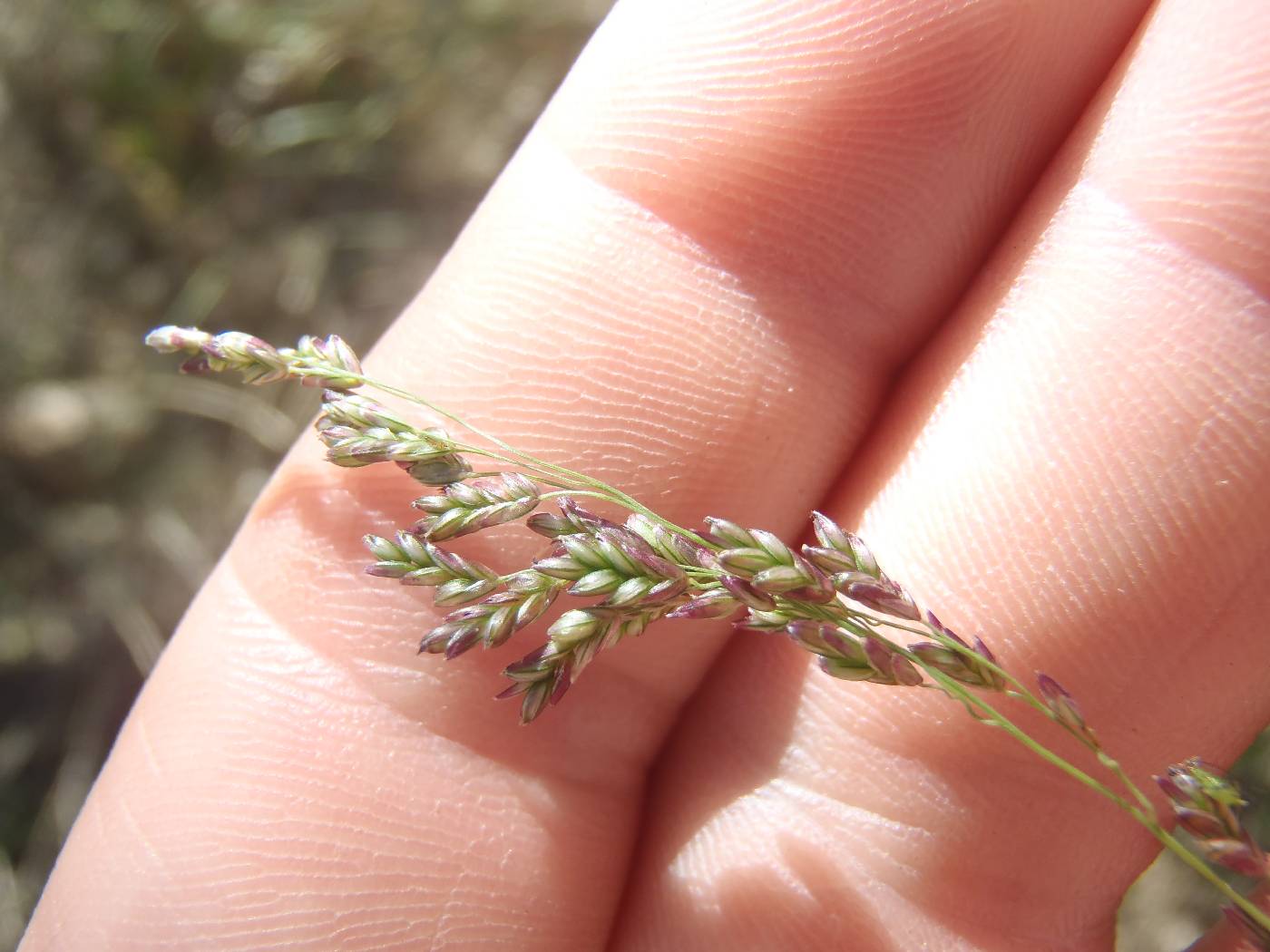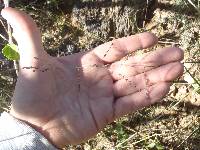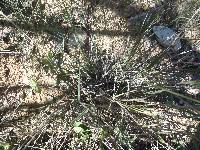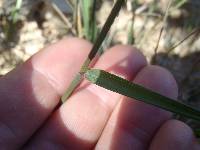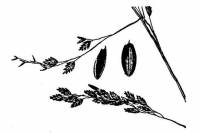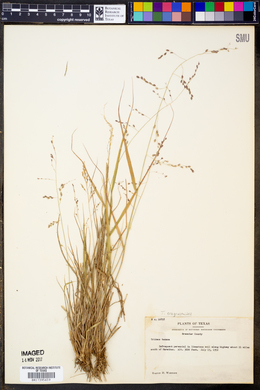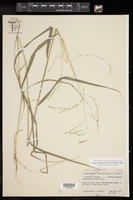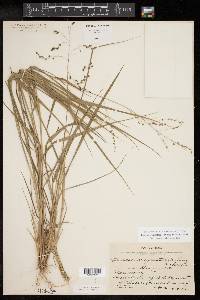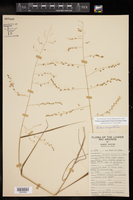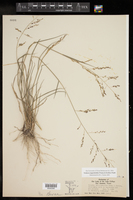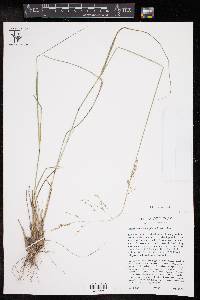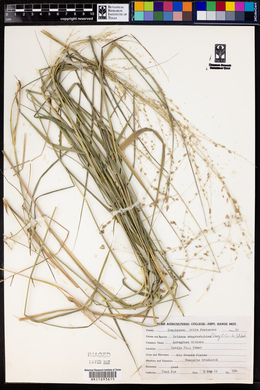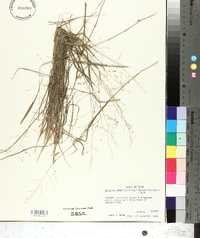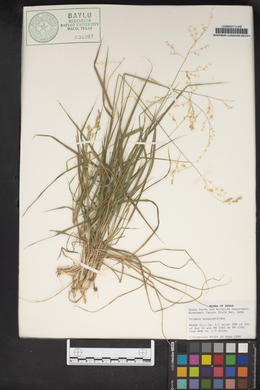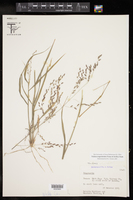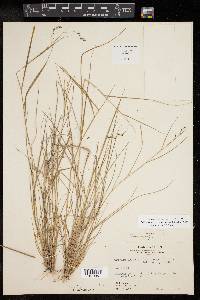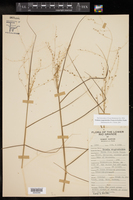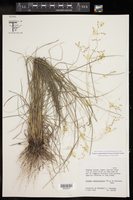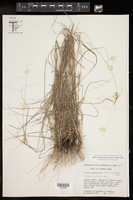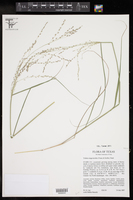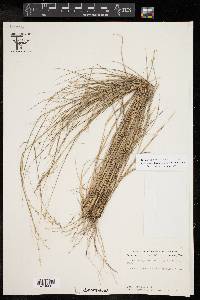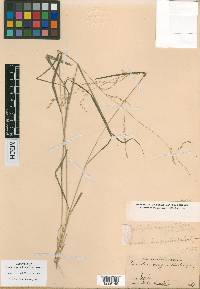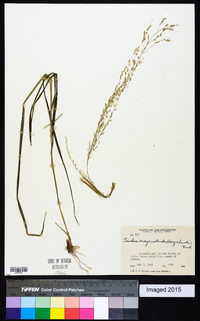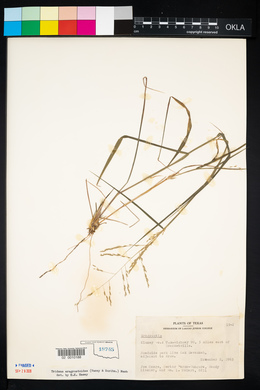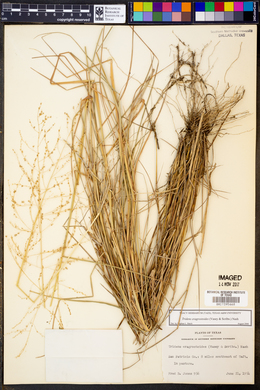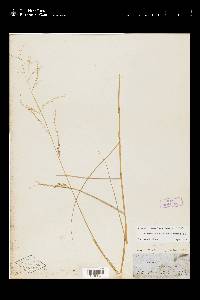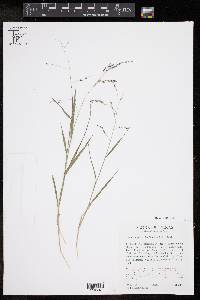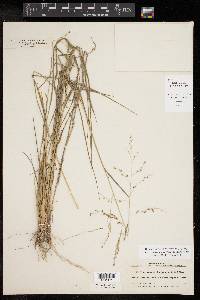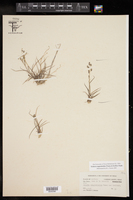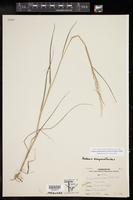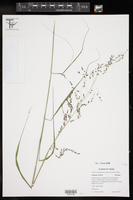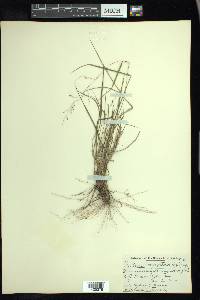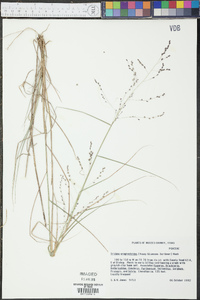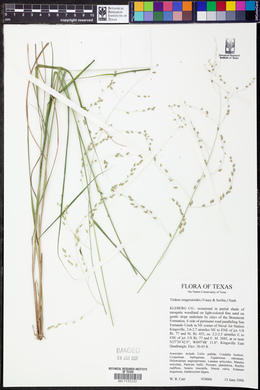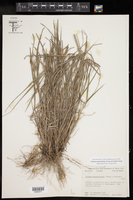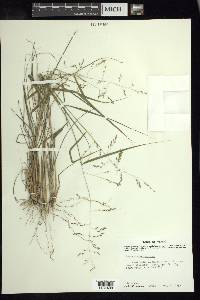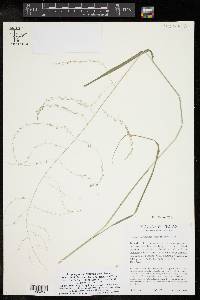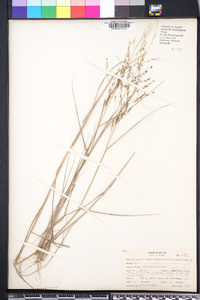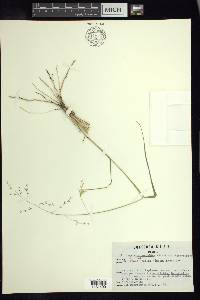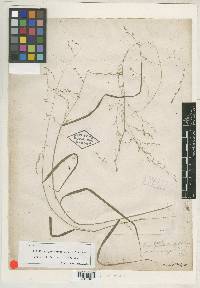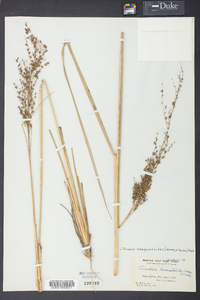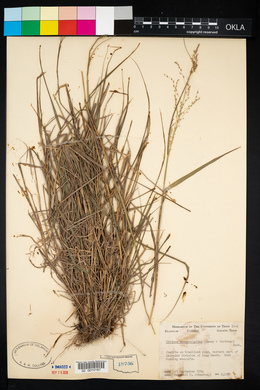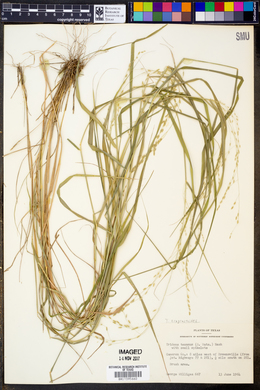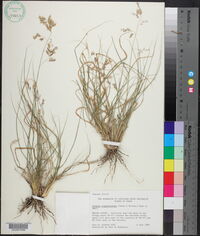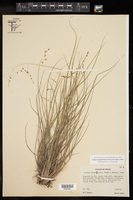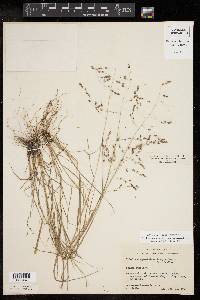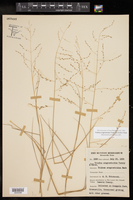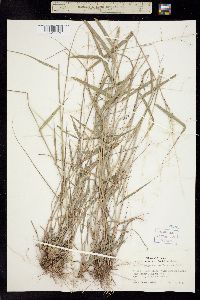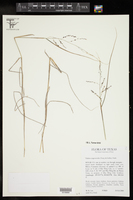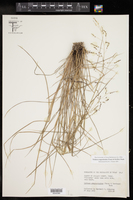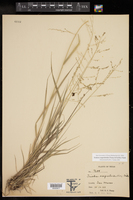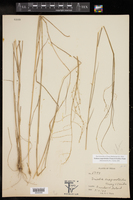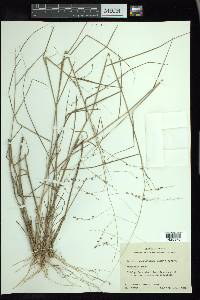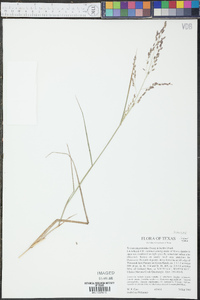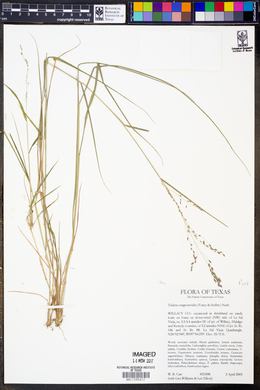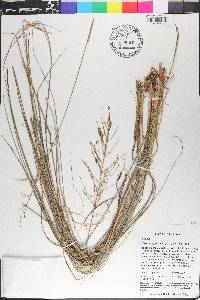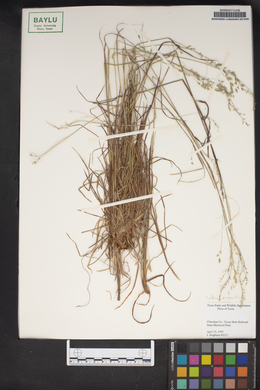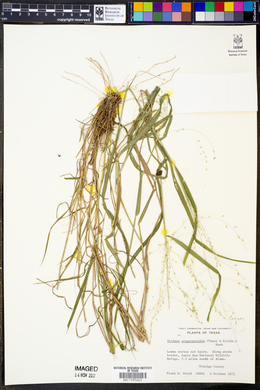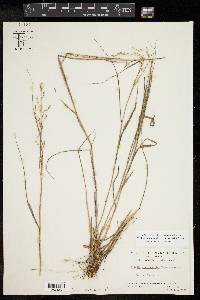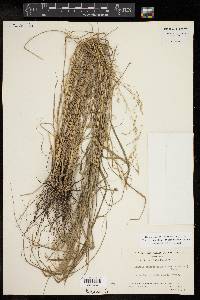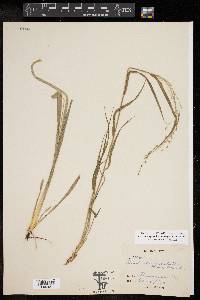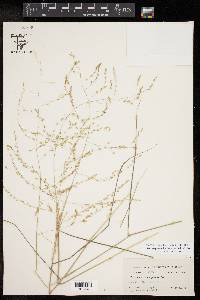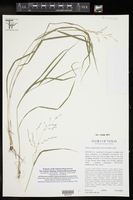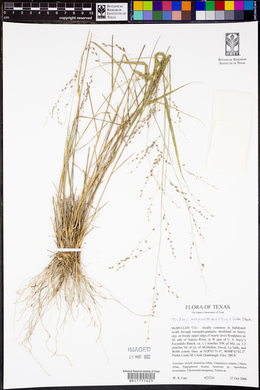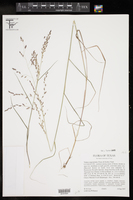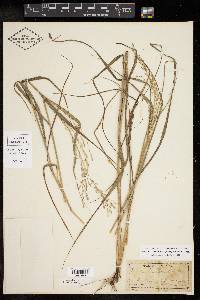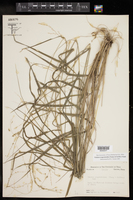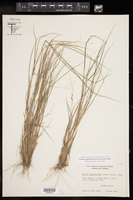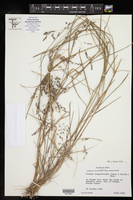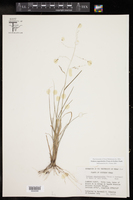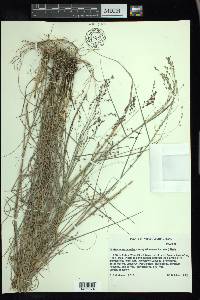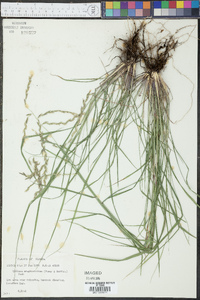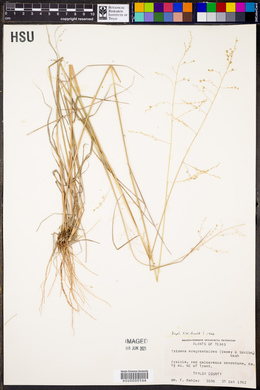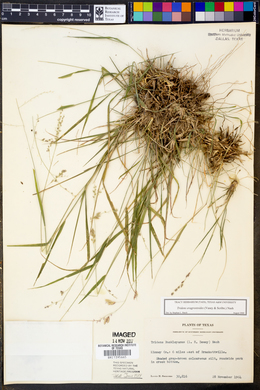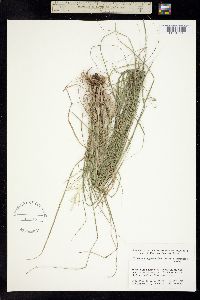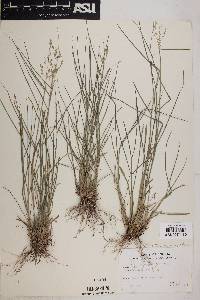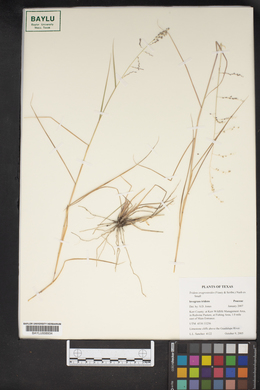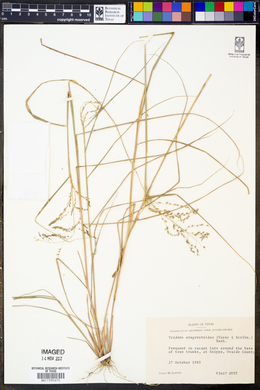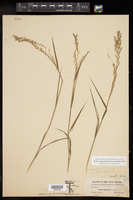
|
|
|
|
Family: Poaceae
lovegrass tridens
[Sieglingia eragrostoides (Vasey & Scribn.) L.H. Dewey, moreSieglingia eragrostoides var. scabra Vasey ex Beal, Triodia eragrostoides Vasey & Scribn., Triodia eragrostoides var. scabra (Vasey ex Beal) Bush] |
Plants cespitose, with knotty, shortly rhizomatous bases. Culms 50-100 cm; nodes sometimes sparsely bearded. Sheaths glabrous, scabrous, or sparsely pilose, rounded; ligules 1.2-3 mm, glabrous, membranous, usually lacerate; blades 10-15 cm long, 1.5-5 mm wide, scabrous (occasionally sparsely pilose), apices long-attenuate. Panicles 10-30 cm long, to 20 cm wide, open; branches 5-10(12) cm, lax, ascending to reflexed at maturity, proximal internodes longer than the distal internodes; pedicels (1.5)3-5 mm. Spikelets 3-7 mm, with 5-12 florets. Glumes glabrous, 1-veined, purple; lower glumes 2-2.5 mm; upper glumes 2-3.5 mm; lemmas 2-3.2 mm, veins puberulent to well above midlength, midveins sometimes excurrent, lateral veins rarely reaching the distal margins; paleas 1.5-2 mm, glabrous or scabrous basally, neither enlarged nor bowed-out; anthers 1-1.5 mm. Caryopses 1-1.3 mm. 2n = 40. Tridens eragrostoides grows in brush grasslands, generally in partial shade. Its range extends from the southern United States into Mexico and Cuba. Dr. David Bogler, USDA NRCS PLANTS Database Perennials, Terrestrial, not aquatic, Rhizomes present, Rhizome short and compact, stems close, Stems nodes swollen or brittle, Stems erect or ascending, Stems caespitose, tufted, or clustered, Stems terete, round in cross section, or polygonal, Stem internodes hollow, Stems with inflorescence less than 1 m tall, Stems, culms, or scapes exceeding basal leaves, Leaves mostly basal, below middle of stem, Leaves mostly cauline, Leaves conspicuously 2-ranked, distichous, Leaves sheathing at base, Leaf sheath mostly open, or loose, Leaf sheath smooth, glabrous, Leaf sheath and blade differentiated, Leaf blades linear, Leaf blades very narrow or filiform, less than 2 mm wide, Leaf blades 2-10 mm wide, Leaf blades mostly flat, Leaf blade margins folded, involute, or conduplicate, Leaf blades mostly glabrou s, Leaf blades more or less hairy, Leaf blades scabrous, roughened, or wrinkled, Ligule present, Ligule a fringed, ciliate, or lobed membrane, Inflorescence terminal, Inflorescence an open panicle, openly paniculate, branches spreading, Inflorescence solitary, with 1 spike, fascicle, glomerule, head, or cluster per stem or culm, Inflorescence lax, widely spreading, branches drooping, pendulous, Inflorescence with 2-10 branches, Inflorescence branches more than 10 to numerous, Flowers bisexual, Flowers unisexual, Spikelets pedicellate, Spikelets laterally compressed, Spikelet less than 3 mm wide, Spikelets with 3-7 florets, Spikelets with 8-40 florets, Spikelets solitary at rachis nodes, Spikelets all alike and fertille, Spikelets bisexual, Spikelets disarticulating above the glumes, glumes persistent, Spikelets disarticulating beneath or between the florets, Rachilla or pedicel glabrous, Glumes present, empty bracts, Glumes 2 clearly present, Glumes equal or subequal, Glumes equal to or longer than adjacent lemma, Glumes keeled or winged, Glumes 1 nerved, Lemmas thin, chartaceous, hyaline, cartilaginous, or membranous, Lemma 3 nerved, Lemma body or surface hairy, Lemma apex dentate, 2-fid, Lemma awnless, Lemma mucronate, very shortly beaked or awned, less than 1-2 mm, Lemma straight, Callus or base of lemma evidently hairy, Callus hairs shorter than lemma, Palea present, well developed, Palea membranous, hyaline, Palea shorter than lemma, Palea about equal to lemma, Palea 2 nerved or 2 keeled, Stamens 3, Styles 2-fid, deeply 2-branched, Stigmas 2, Fruit - caryopsis.
FNA 2003, Gould 1980 Common Name: lovegrass tridens Duration: Perennial Nativity: Native Lifeform: Graminoid General: Tufted perennial with knotty, rhizomatous bases, stems 50-100 cm, nodes sometimes sparsely bearded; sheaths glabrous to scabrous, with long attenuate apices. Vegetative: Blades 10-15 cm long, 1.5-5 mm wide, flat, ligule membranous, lacerate, 1-3 mm. Inflorescence: Open panicle 10-30 cm long, to 20 cm wide, with lax branches 5-10 cm, ascending to reflexed at maturity, lower internodes longer than upper internodes; pedicels 3-5 mm, spikelets 3-7 mm with 5-12 florets; glumes glabrous, 1-veined, purple, unequal with the lower half the length of the upper, lemmas 2-3.5 mm, rounded on back, thin and scarious with bright green nerves and purple-tinged margins and apices, pubescent on the nerves below, sometimes sparse with apices rounded or with a shallow notch. Ecology: Found on dry slopes, often in partial shade below 4,000 ft (1219 m); flowers June-October. Distribution: From the southern United States into Mexico and Cuba. Notes: Distinguished from other Tridens by the open panicles. Ethnobotany: Unknown Etymology: Tridens means three-toothed, while eragrostoides means like the genus Eragrostis. Synonyms: Triodia eragrostoides Editor: SBuckley, 2010 |
|
|
|

